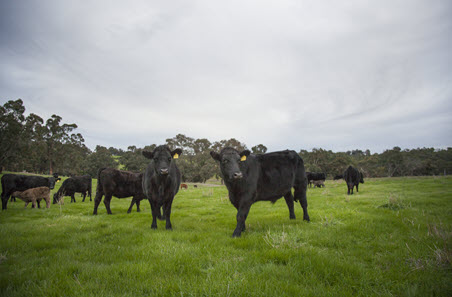
What we already know from the NYCI
On Monday, Meat & Livestock Australia (MLA) launched a brand-new cattle market indicator that offers a complete view of the national young restocker market. The National Young Cattle Indicator (NYCI), pronounced “Nicky”, is the first MLA indicator to cover sales across multiple sales channels, covering both physical saleyards, and the growing online market.
The indicator follows the same structure as other MLA indicators, presenting prices on a seven-day rolling average, expressed in cents per kilogram liveweight (¢/kg lwt) and is rounded to two decimal points. The indicator is specified to vealer, weaner, and yearling heifers, steers and mixed pens purchased by restockers, with a liveweight from 200kg and Not Station Mated (NSM) for online sales.
The NYCI will cover cattle sold anywhere in Australia, unlike the Eastern Young Cattle Indicator (EYCI) which only covers saleyard markets on the east coast and the Western Young Cattle Indicator (WYCI), which covers cattle sold in the west.
On the indicator dashboard, which can be found on the website linked at the end of this article, there are currently 12 months of available data. The intention is to now expand this out within the MLA statistics database. When looking at the current data, the movement of the national restocker over the past year can be seen.
Prices
On the day of release, the NYCI was sitting at 316¢/kg lwt. Over the last 12 months, prices have fluctuated dramatically. Prices have not returned to where they were in May 2023, at 363¢/kg lwt. From May 2023, the NYCI market eased with the broader cattle market, reaching its lowest price in October 2023, falling 178¢ or 49% to 185¢/kg lwt. This is the same time the EYCI reached a near nine-year low. From this point, prices recovered to the tail end of 2023, dropped less dramatically over the Christmas period, and recovered once again to 356¢/kg lwt in February. Since March, long weekends and short weeks have created volatility in supply and price, with prices remaining within a 40¢ bracket between 300¢/kg lwt and 337¢/kg lwt, landing on 315¢/kg lwt at the time of release.
Supply
The NYCI covers restocker purchased young cattle above 200kg lwt from physical saleyards and online platforms. There is an assumption that most cattle purchased through online platforms are purchased by producers, and are hence classified as a restocker animal. The breakdown of the last week of sales shows that 60% of the 139,520 head of indicator throughout was from physical saleyards, and 40% from online sales. NSW and Queensland are clearly the major players in the NYCI making up 33% and 53% of throughput respectively. Victoria makes up 8% of the indicator, SA 4%, and Tasmania and WA making up 1% of throughput each.
Interestingly, NSW, Victoria and Tasmania all had larger state throughput through online sales, whereas in Queensland, SA and WA, physical saleyard throughput of young restocker cattle was larger than the online sales channels.
The NYCI is a great step in the visibility of the national cattle market across sales platforms. MLA will continue to provide a detailed analysis of this fit-for-purpose restocker indicator, alongside the National Feeder Steer Indicator, National Heavy Steer Indicator, and other indicators/dynamics in the market.
Access the National Young Cattle Indicator dashboard.



